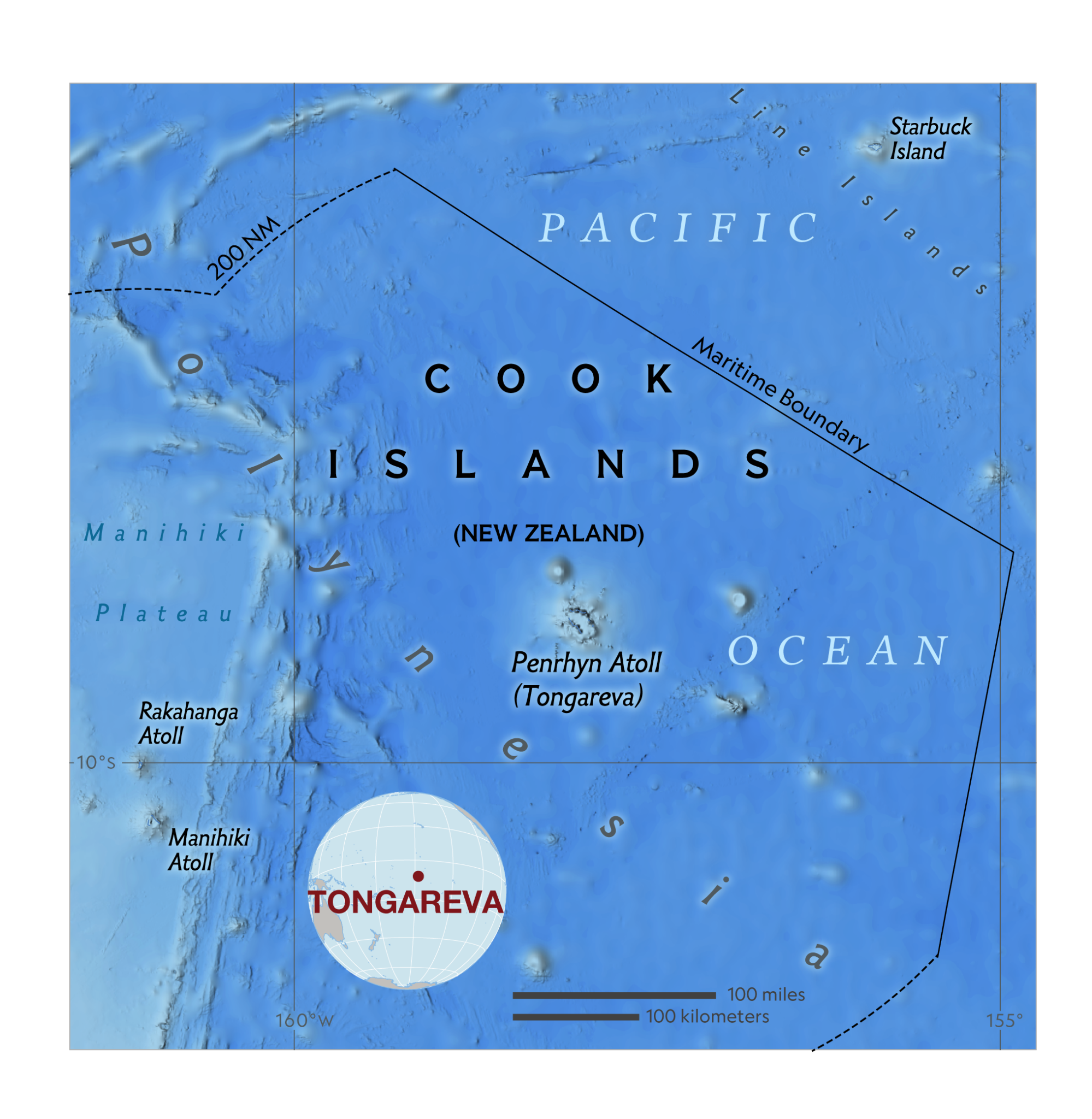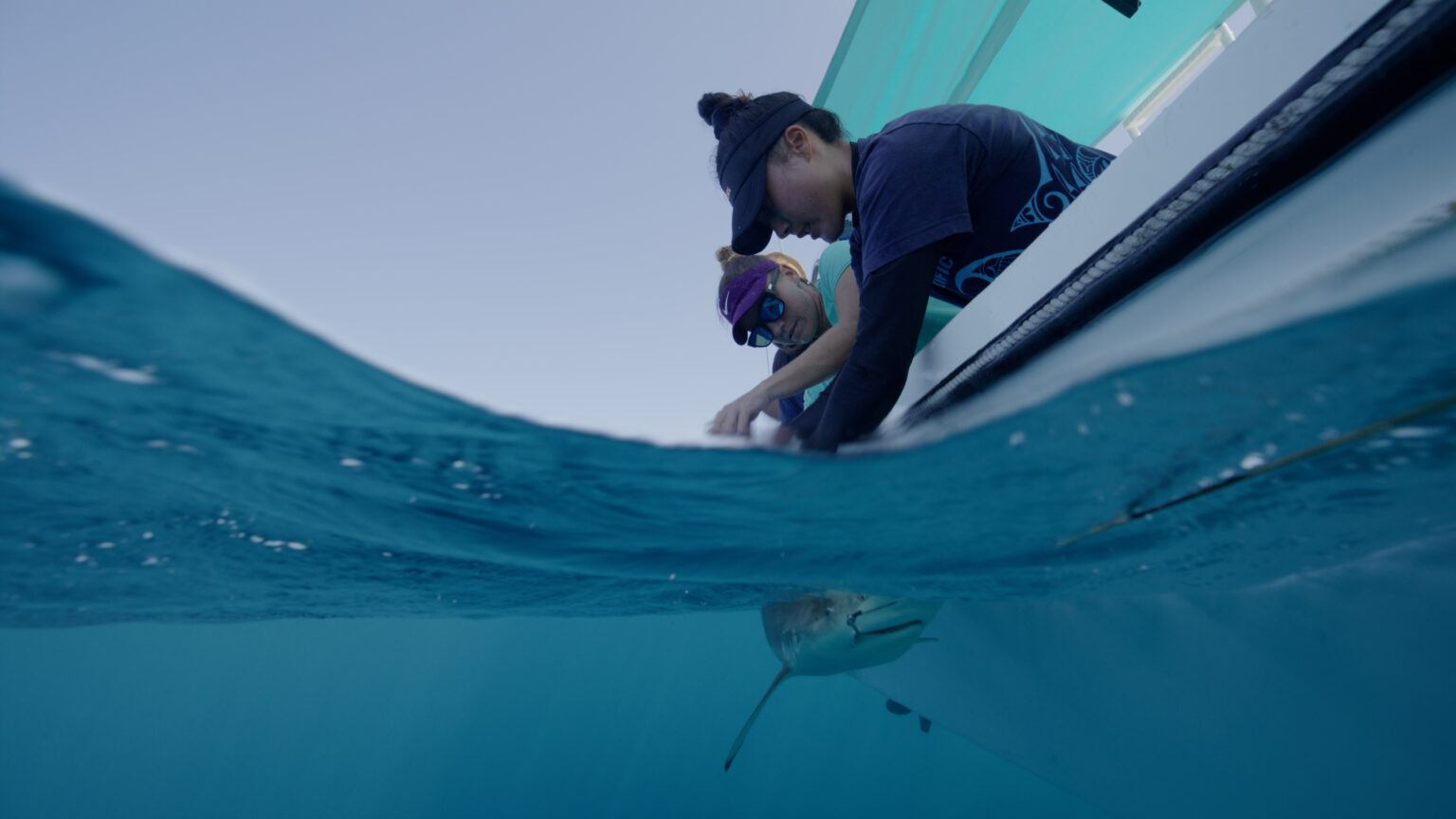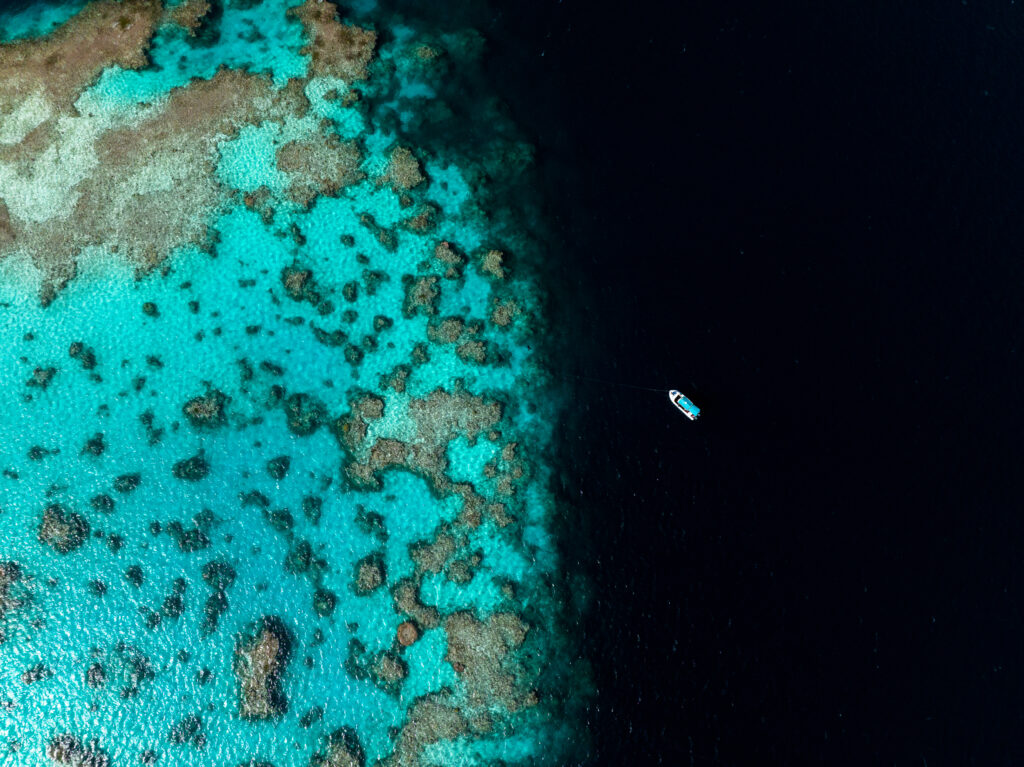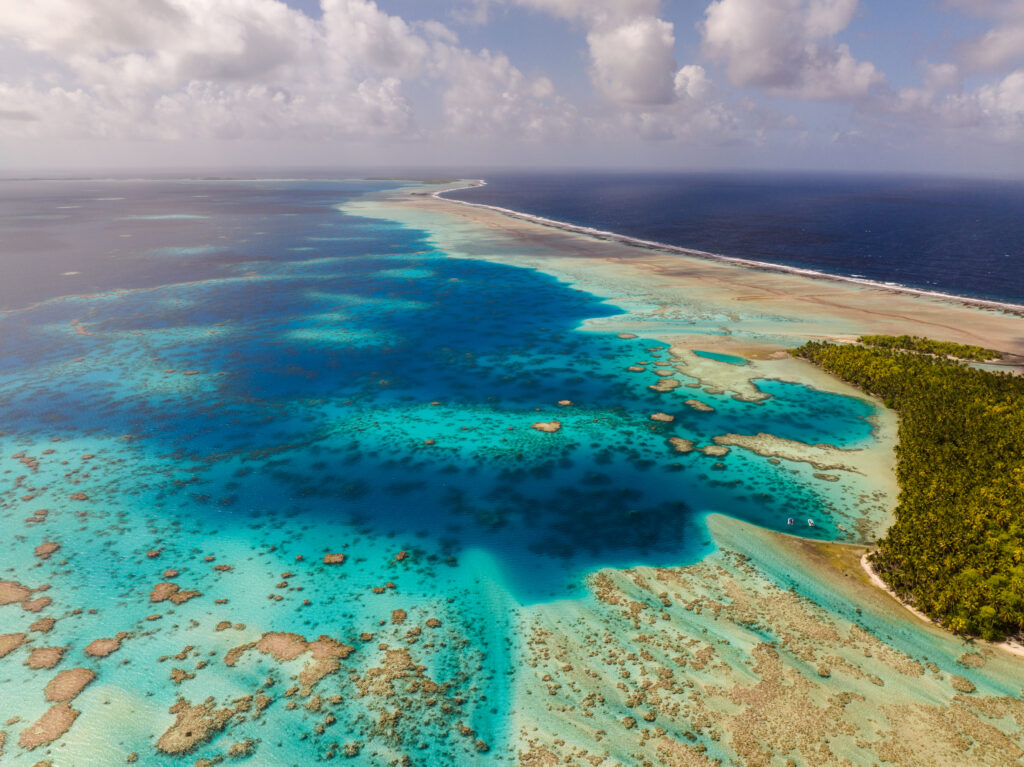Tongareva
At Sea: June – July 2023
The Place
Tongareva Atoll (also called Tongareva, Māngarongaro, Hararanga, and Te Pitaka), is located in the northern group of the Cook Islands and north-east of the capital island of Rarotonga in the Pacific.
A remote atoll, its nearest neighbors are Rakahanga and Mainihiki to the southwest. Tongareva is a circular coral atoll enclosing a lagoon. The atoll rim consists of 18 major islets and the total land area is 9.84 square kilometers (3.80 sq mi).

The Mission



The scientific research, led by Explorer Jess Cramp and her Cook Islands-based research team at Sharks Pacific, focused on answering questions about human-wildlife coexistence in Tongareva. Specifically, how can the atoll, which is inhabited, harbor an apparently healthy marine ecosystem? What are the reasons Tongareva Atoll has such a high density of sharks? Sharks Pacific is a not-for-profit whose mission is to understand the importance of sharks in Pacific communities, and to advocate for the conservation and responsible management of sharks and the related marine environment through research, outreach, and advocacy.
Across the 15 working days around Tongareva, the collaborative team conducted a series of surveys including the satellite tagging of 9 sharks (Silky and Oceanic Whitetip Sharks); diving and reef walking at 22 benthic survey sites; the deployment of 150 Baited Remote Underwater Video Systems (BRUVS) at 5-80 meters depth; eDNA, vertical transects, and three community presentations. The team also deployed the DeepSee submersible down to 400 meters depth, visiting the little-explored seamounts surrounding the island and an under-researched 90-meter-deep lagoon.
Photo credits: Darryl MacDonald, Martin Gamache (map), Tess Goldhagen, Darryl MacDonald (2)